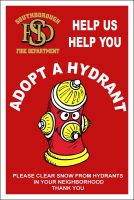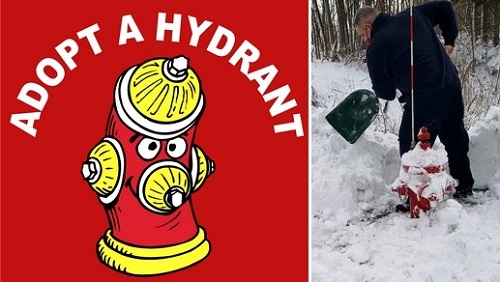Above: All the snow has prompted the Fire Department to issue a request to residents to clear hydrants in their neighborhoods. (photo from Facebook)
The Southborough Fire Department is asking residents, “Help Us Help You”.
 This morning, Fire Chief Stephen Achilles asked me to share the following announcement and flyer:
This morning, Fire Chief Stephen Achilles asked me to share the following announcement and flyer:
Mother Nature is sure keeping us busy! Please join us in protecting Southborough and consider adopting a hydrant near your home or business. Clearing snow at least 3 feet around and creating a path to the roadway ensures quick access by firefighters during an emergency.
Earlier this month, the SFD shared safety tips on Facebook for after a storm. It included a reminder to clear all vents of snow:
The SFD messages remind me of warnings and requests back in 2015 – a very snowy winter in Southborough.
At that time, in addition to public pleas for clearing hydrants, the Southborough Fire Department issued warnings for property and business owners about other snow related risks and responsibilities.
As a reminder, here are excerpts from the letter the SFD issued six winters ago:
This is letter documents an official notification to all public & private businesses, rental housing and educational facilities within the Town of Southborough of the requirements under the Massachusetts Comprehensive Fire Safety Code and Massachusetts Building Code mandating the clearing of snow interfering with any life safety measures. . .
Under the codes the property owner is required to maintain (at all times):
- Clear visibility and access to:
- All designated Fire Lanes
- All fire suppression related fixtures, including; fire department connections (FDC) and fire hydrants on the property. It is highly recommended to also clear the closest street hydrants
- All exterior utility shut-off valves/connections, including; natural gas, propane and electric.
- Clear access to:
- Primary and (if applicable) alternate vehicle access driveways on to the property
- All primary and alternate building exits & egresses “to a safe haven”. The codes define a “safe haven” as a location that is a safe distance outside a building. This may include clearing snow from walkways, etc.
- Clear around all external building exhaust vents, especially heating units



